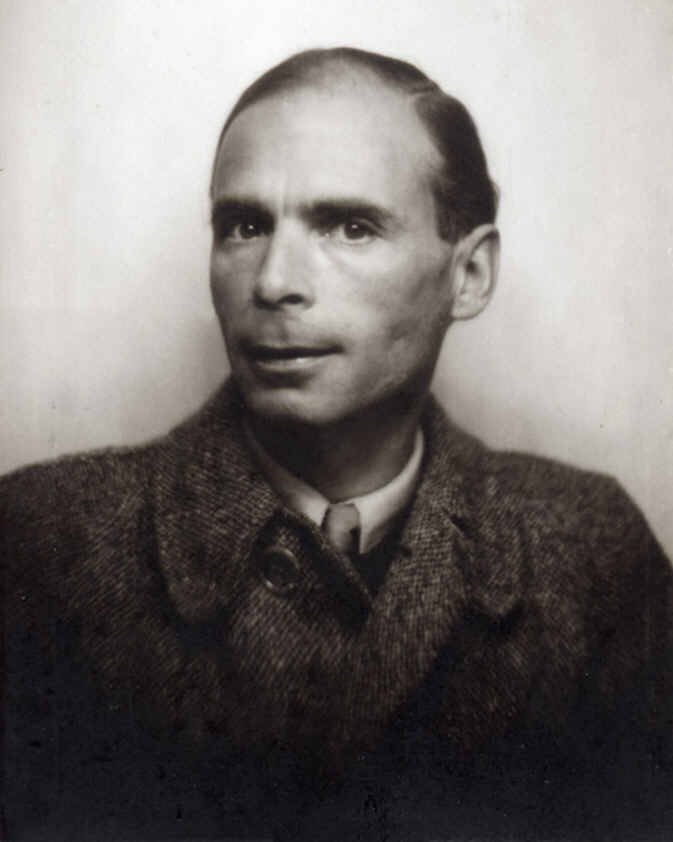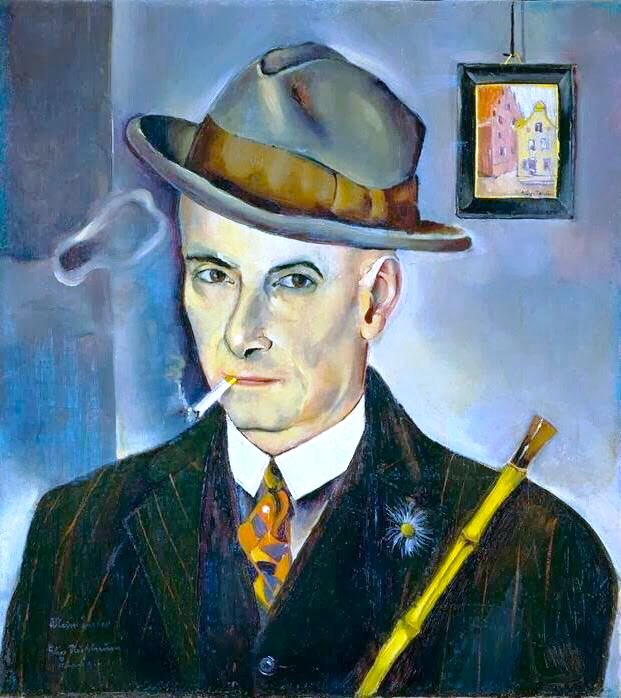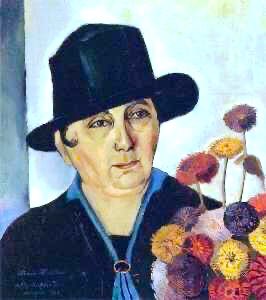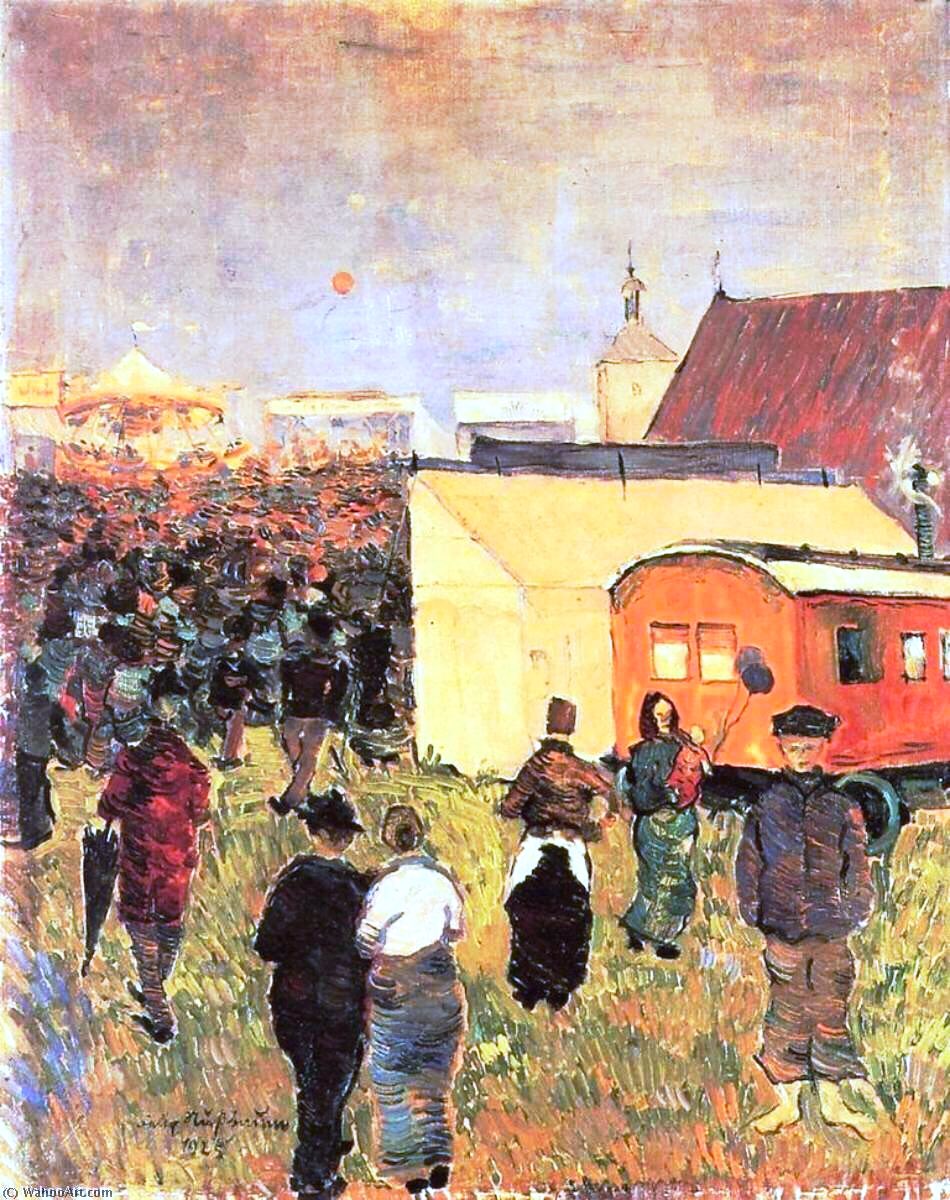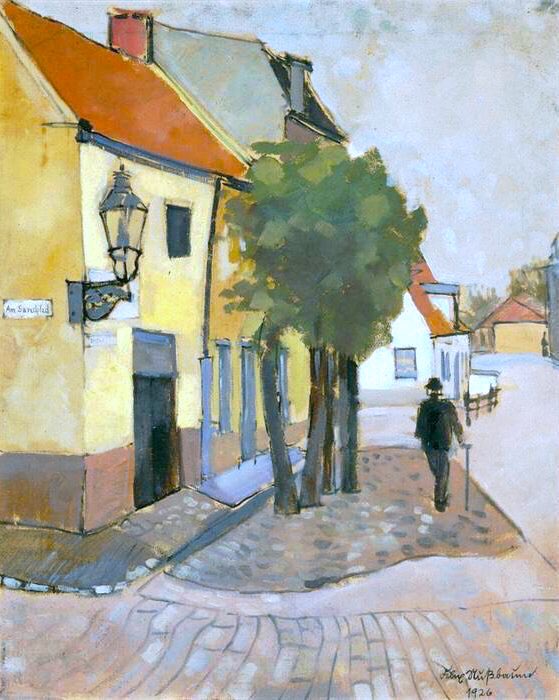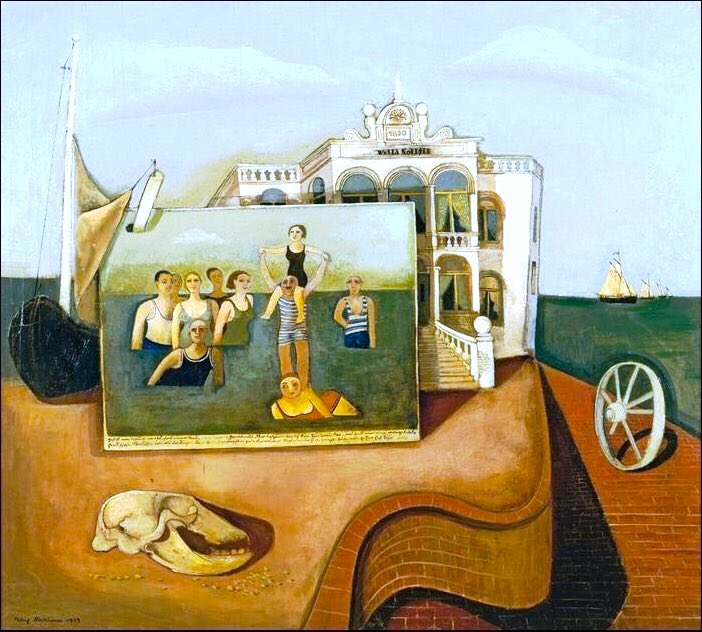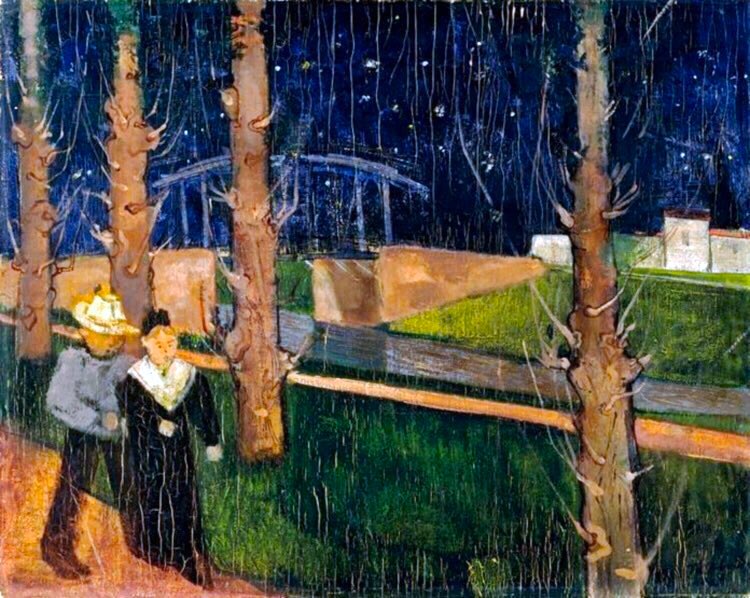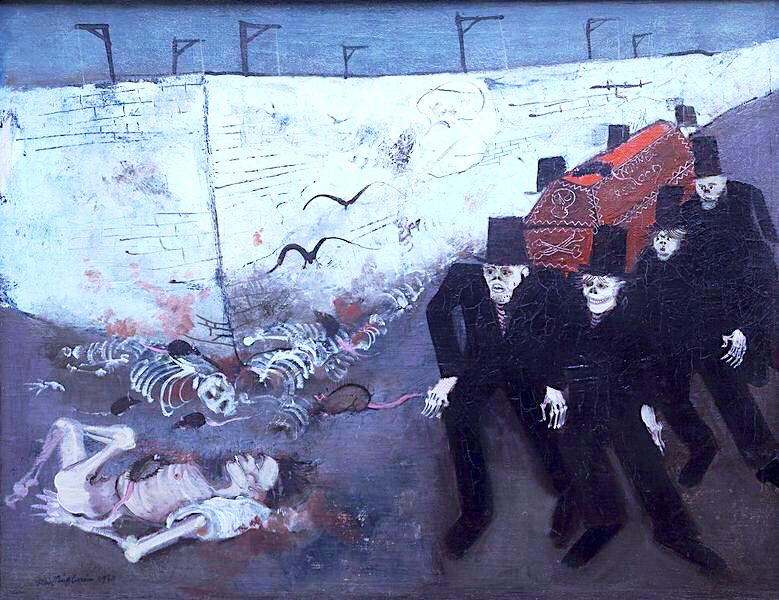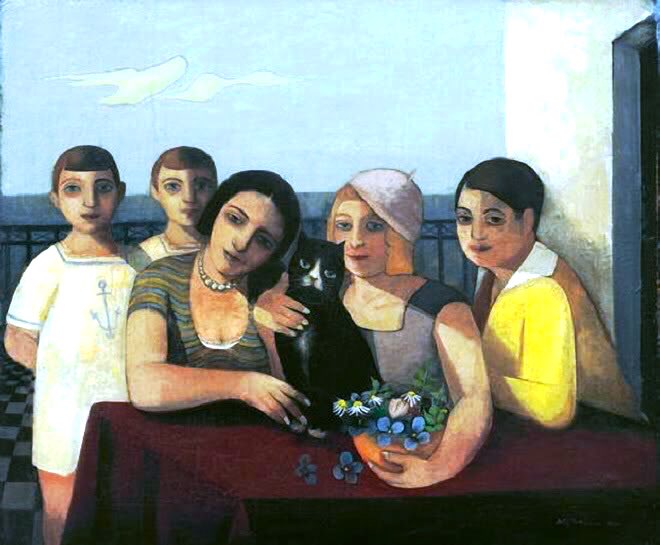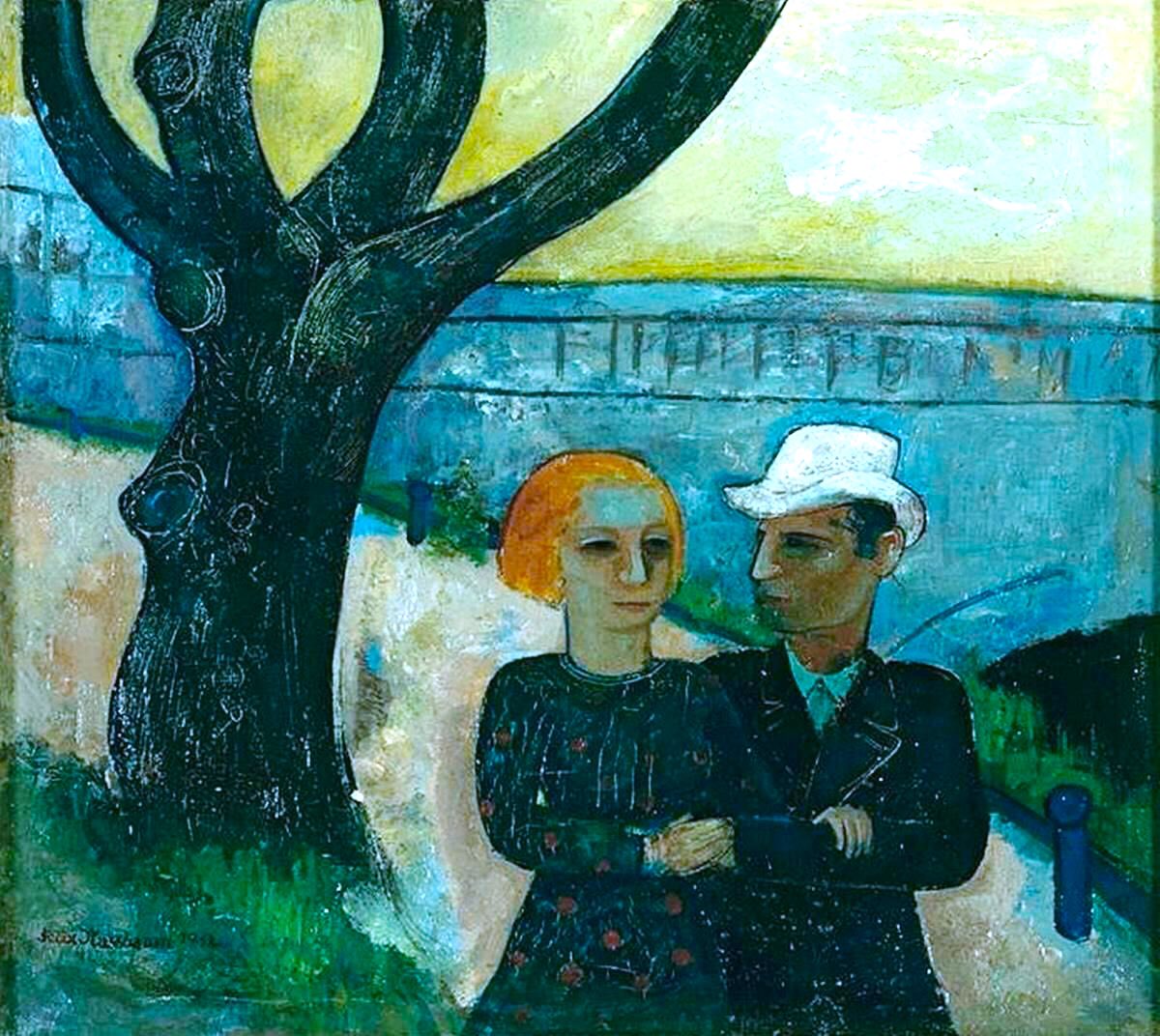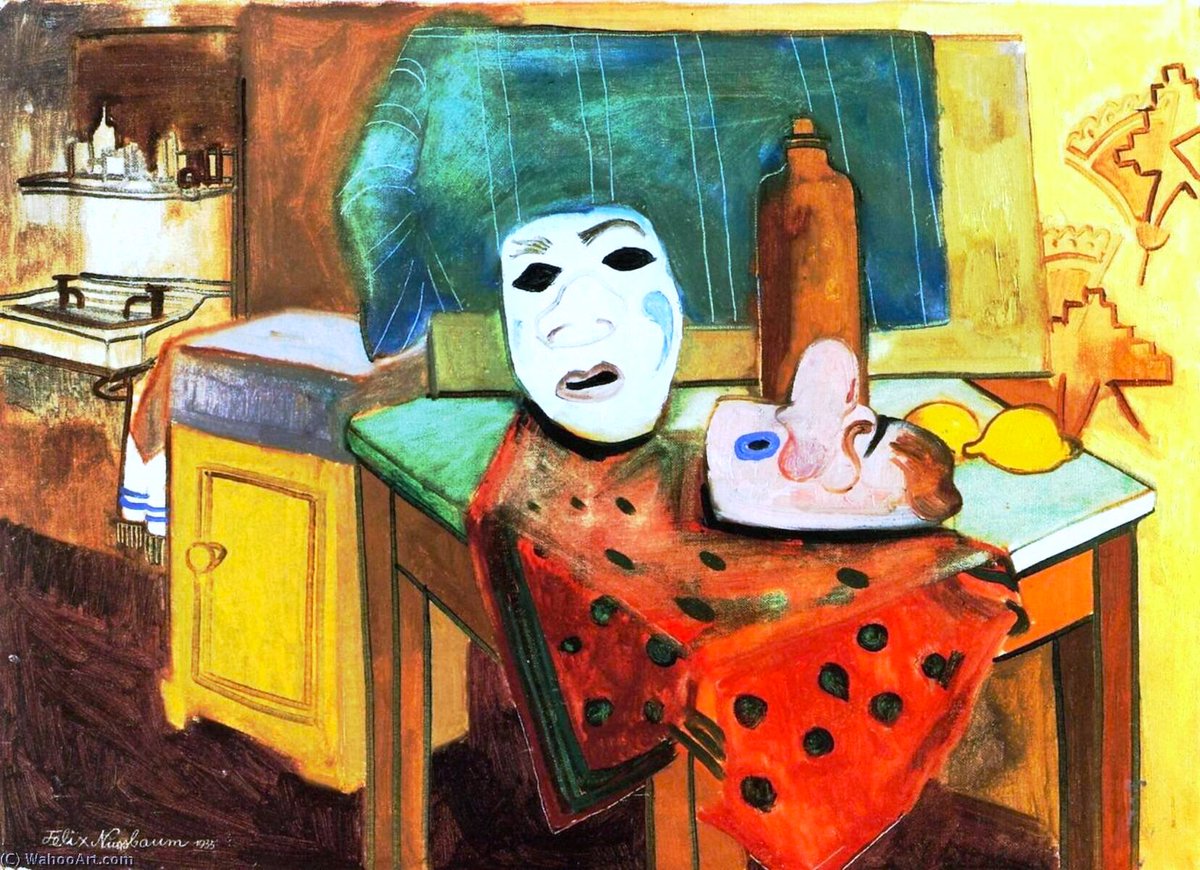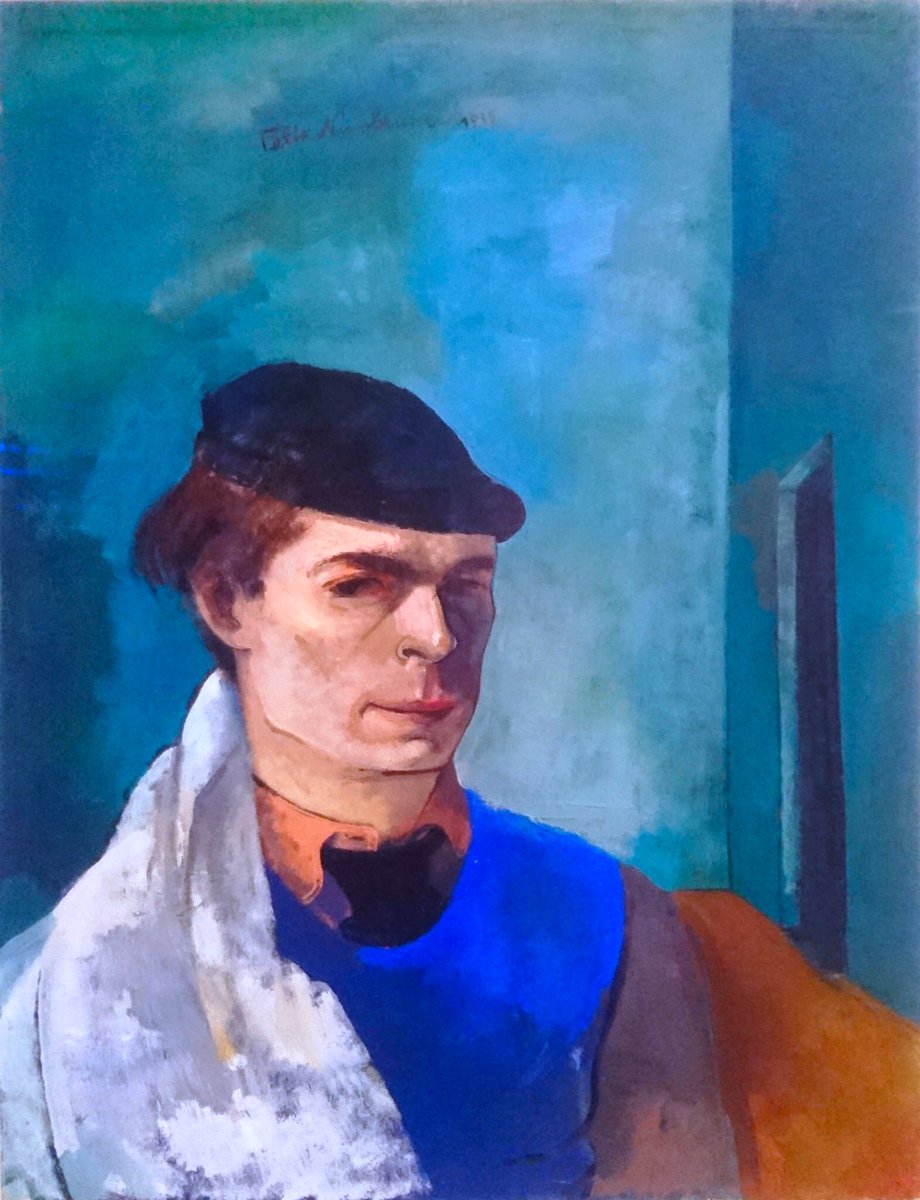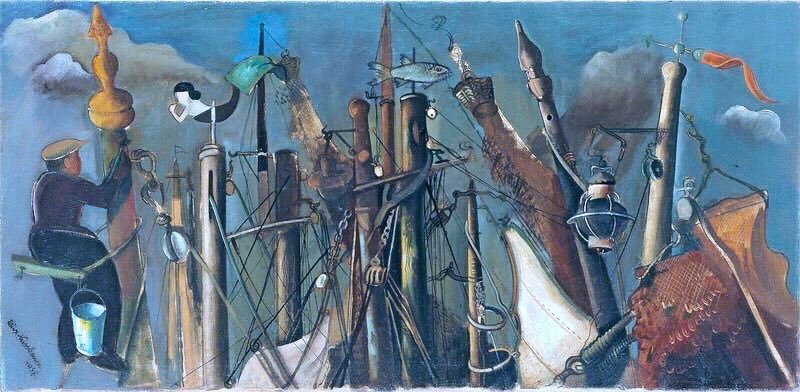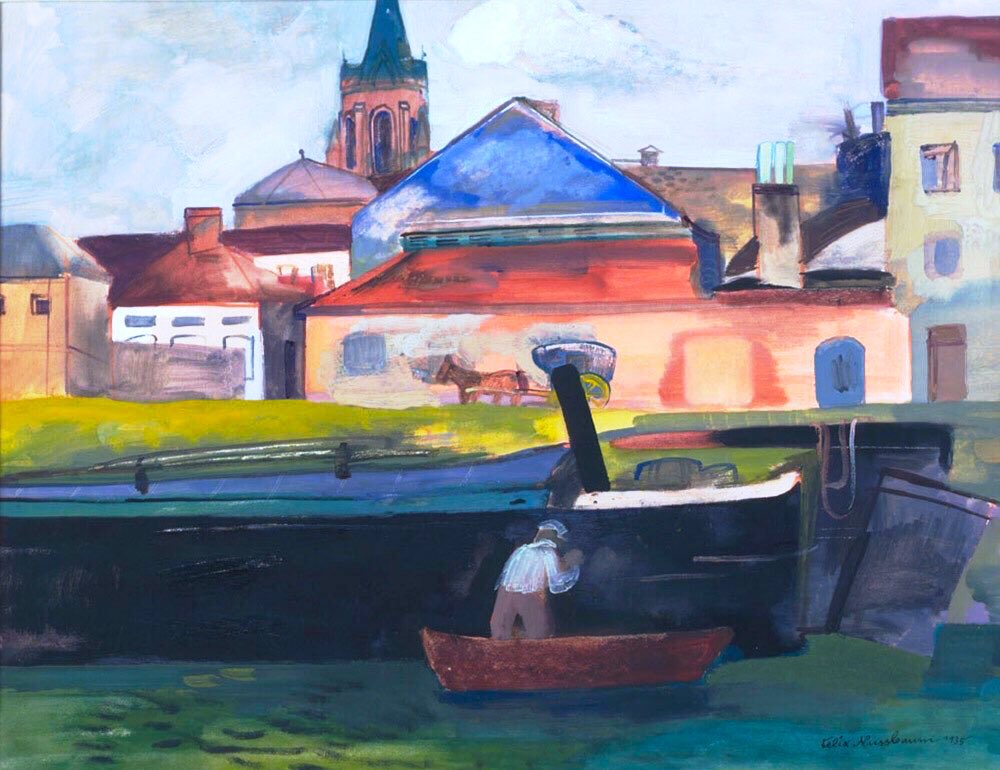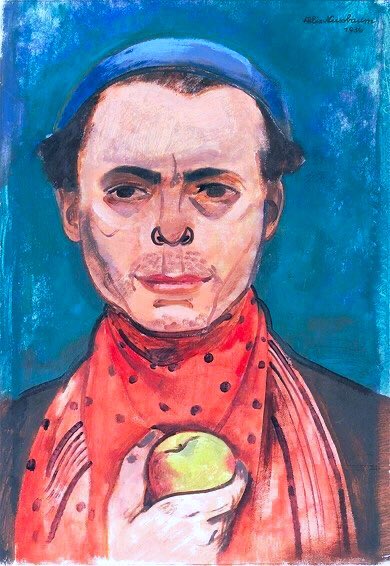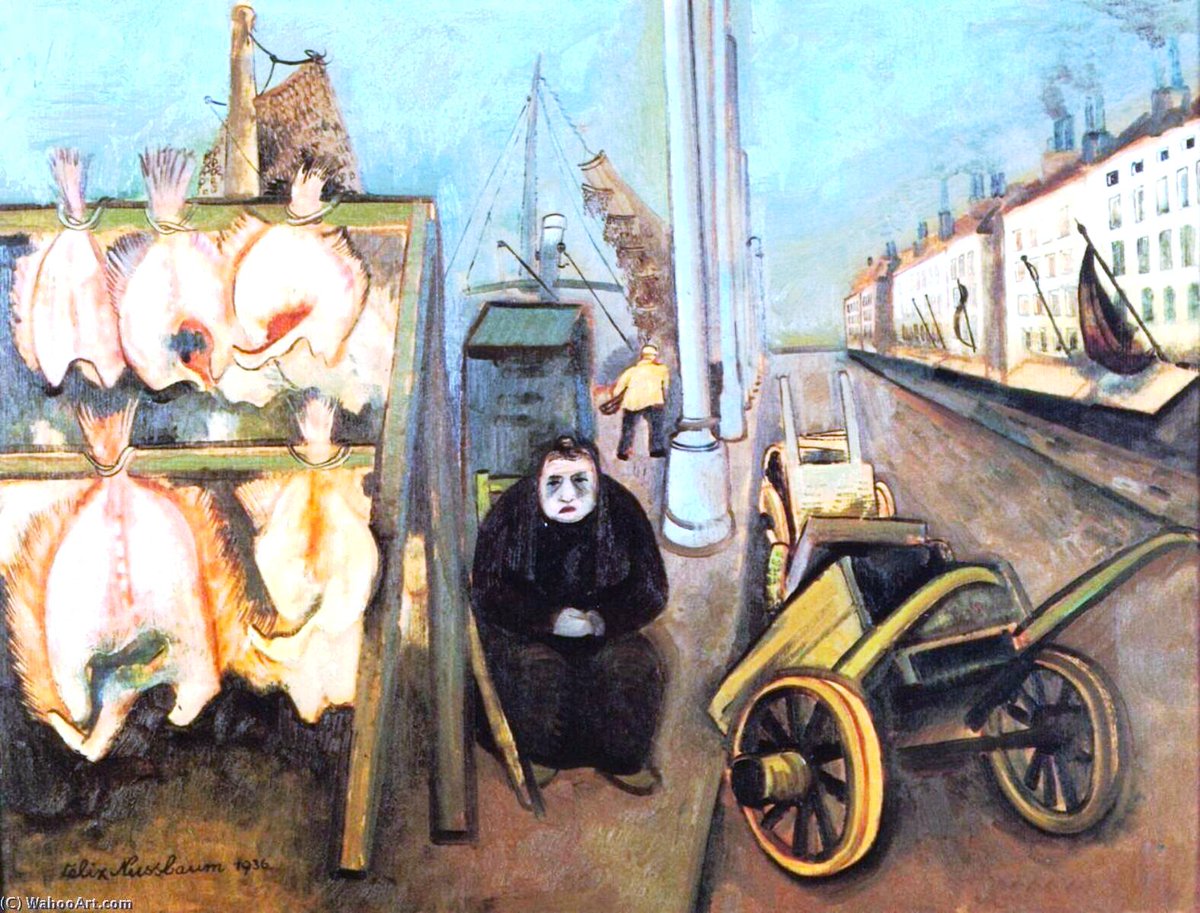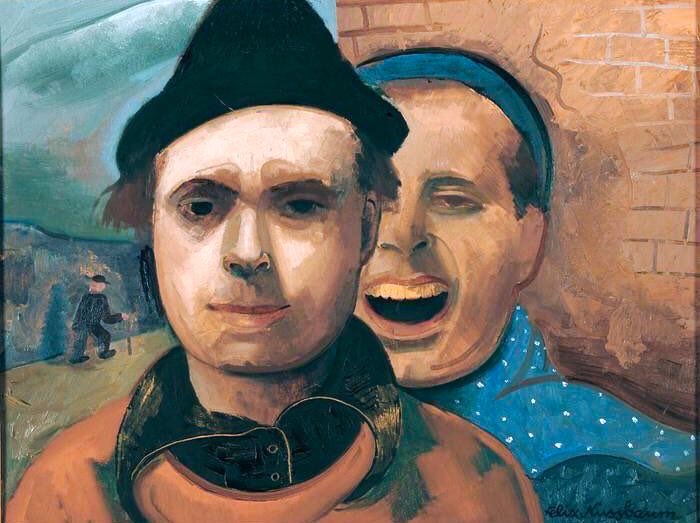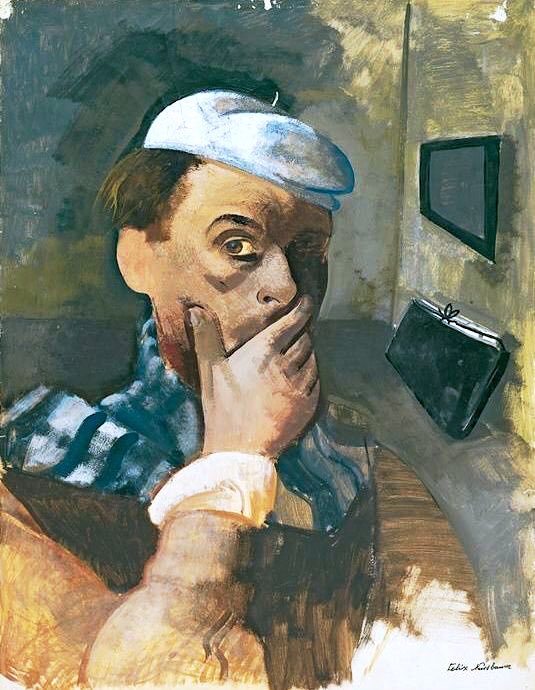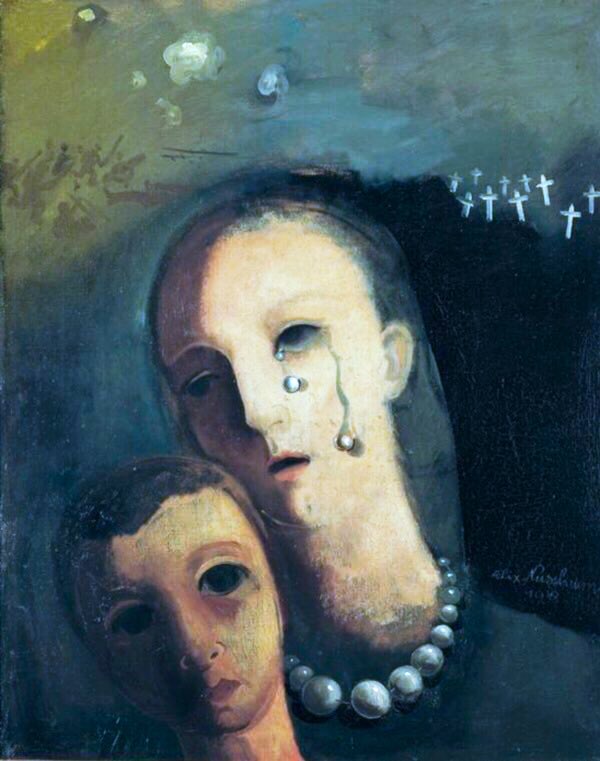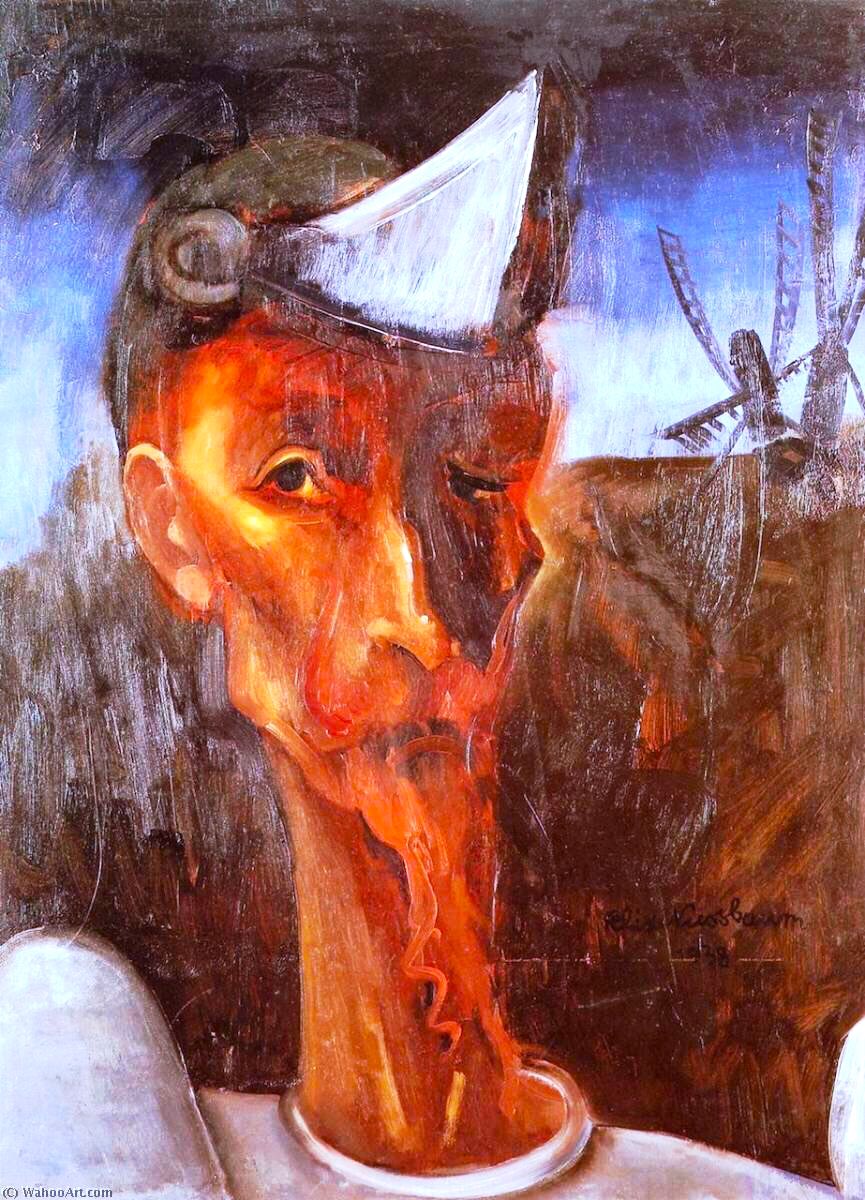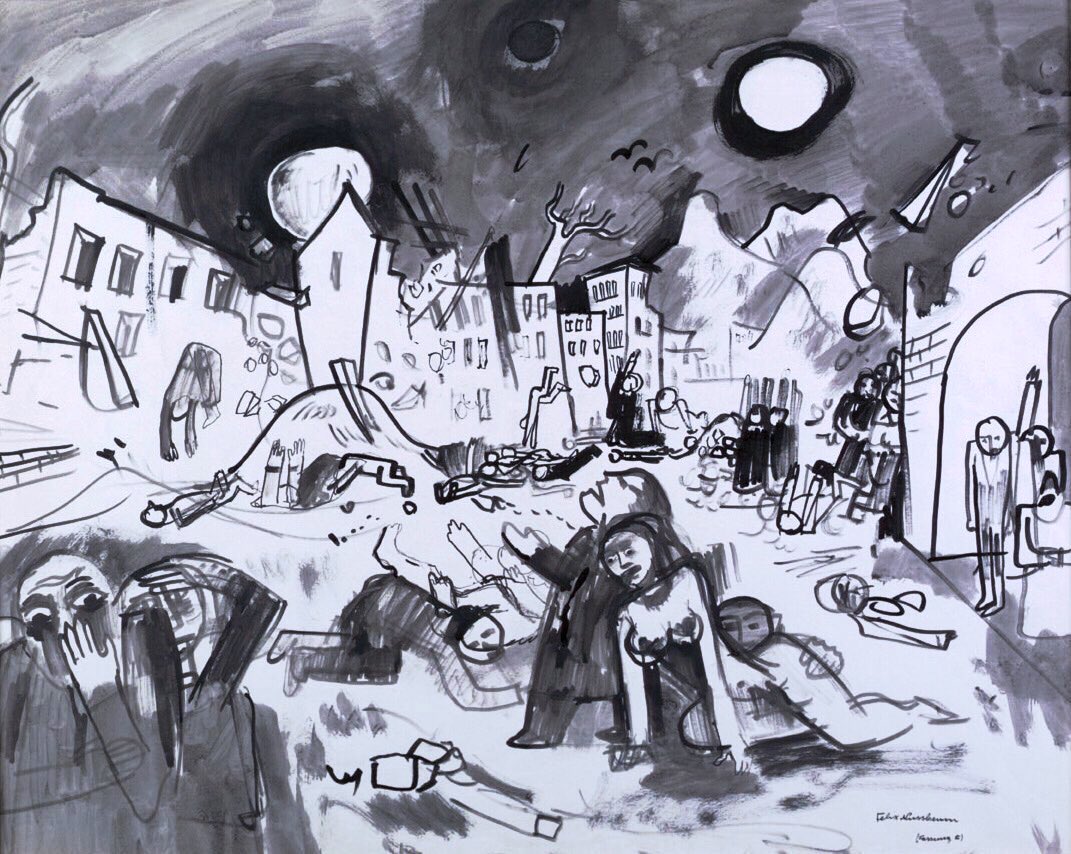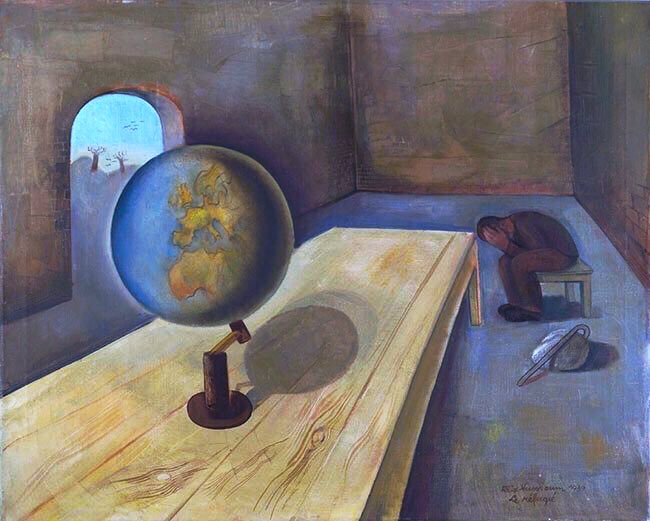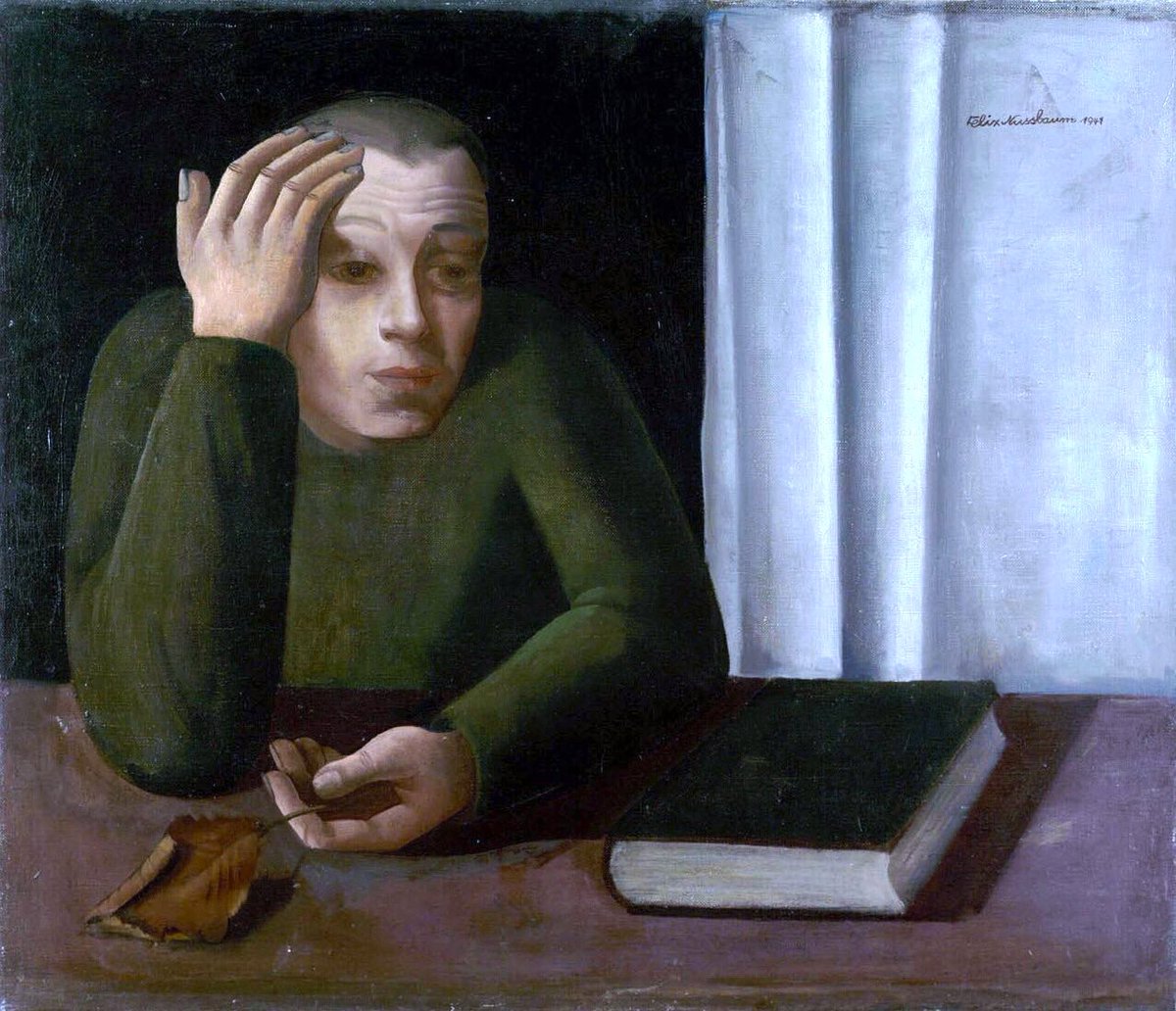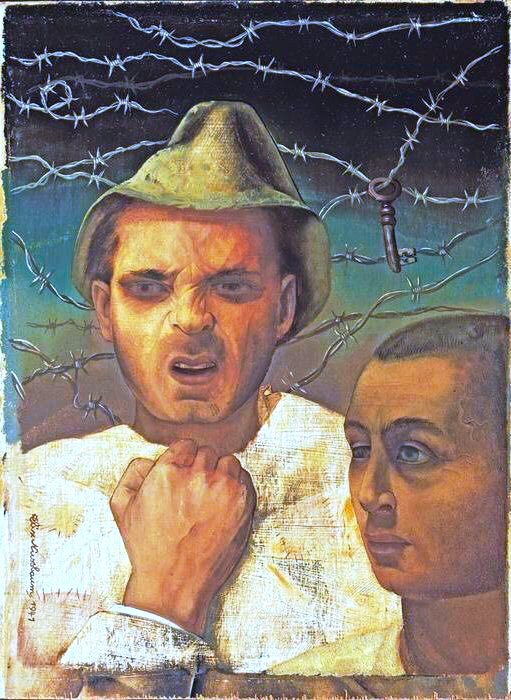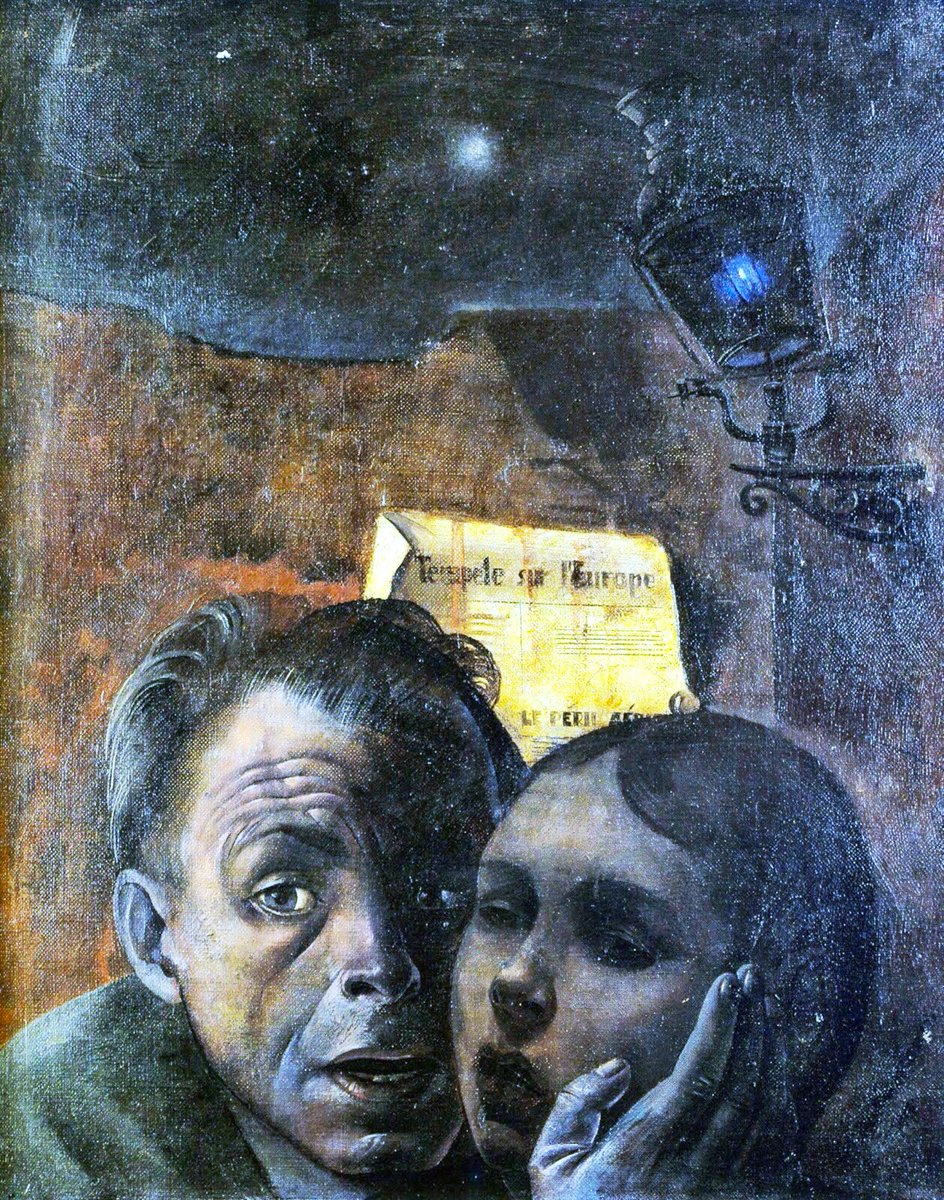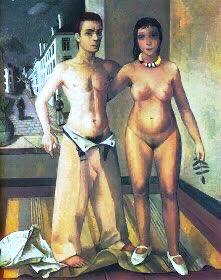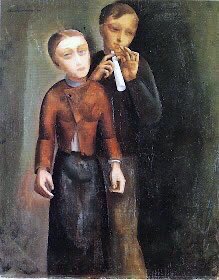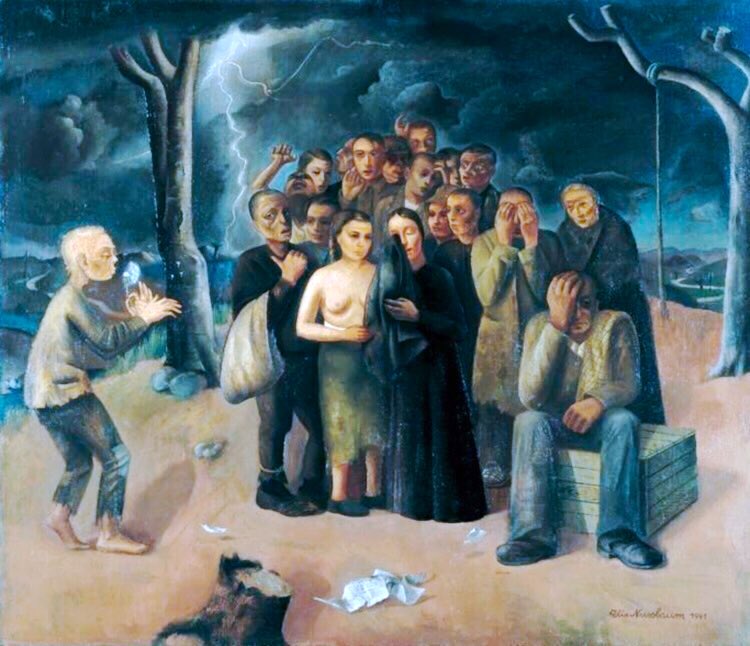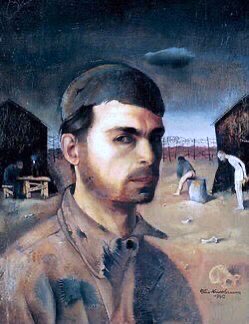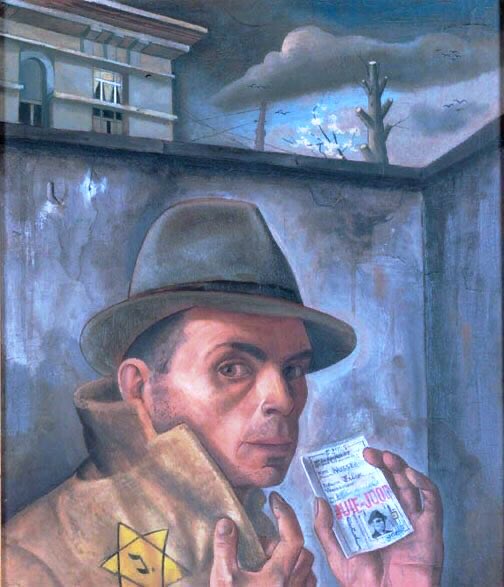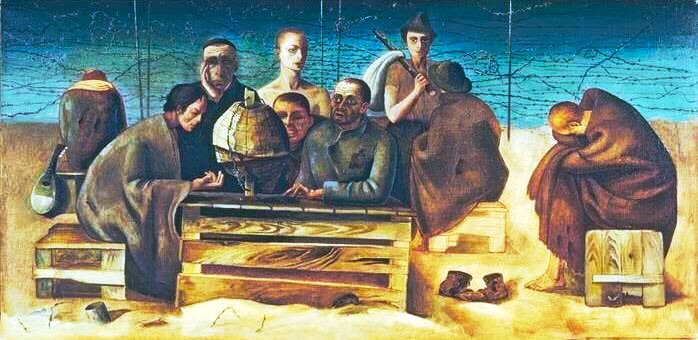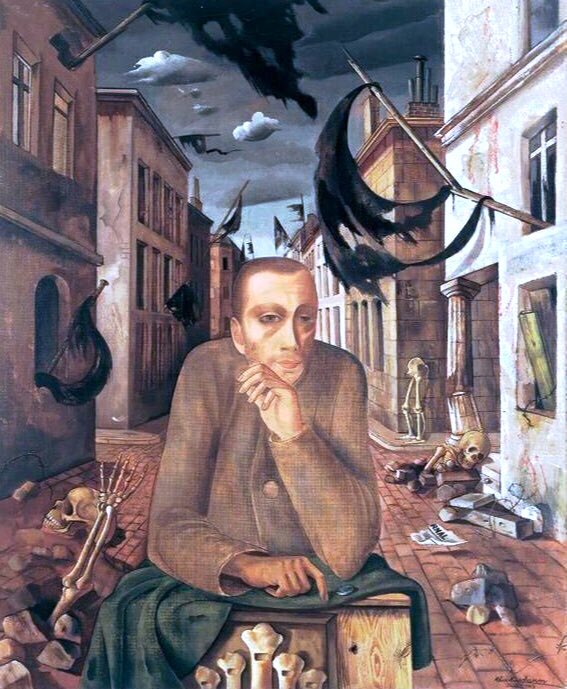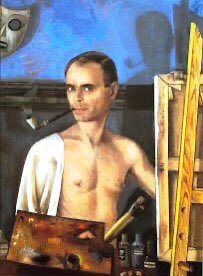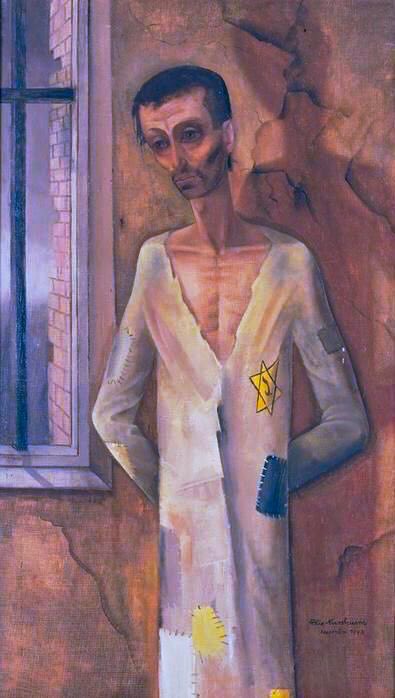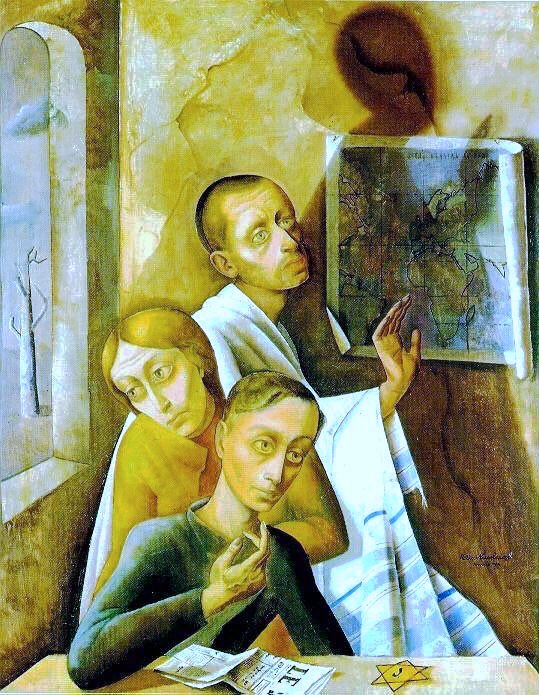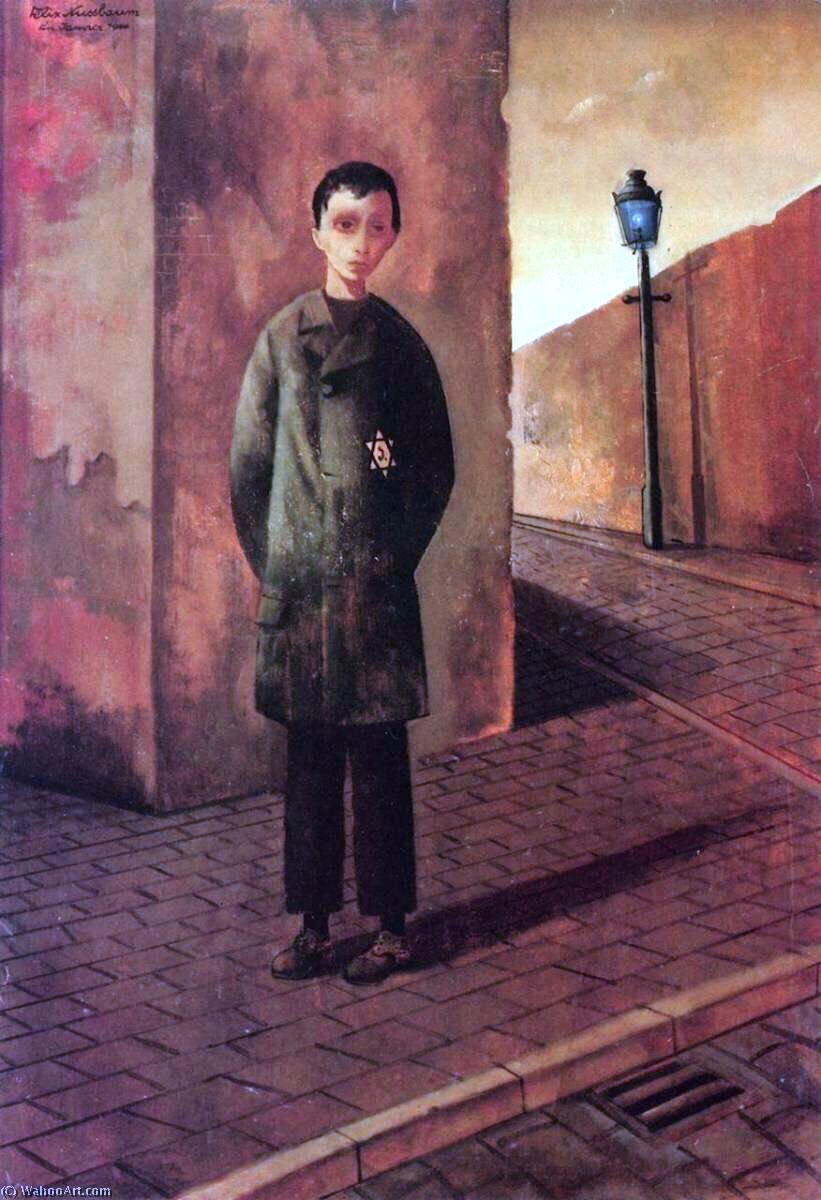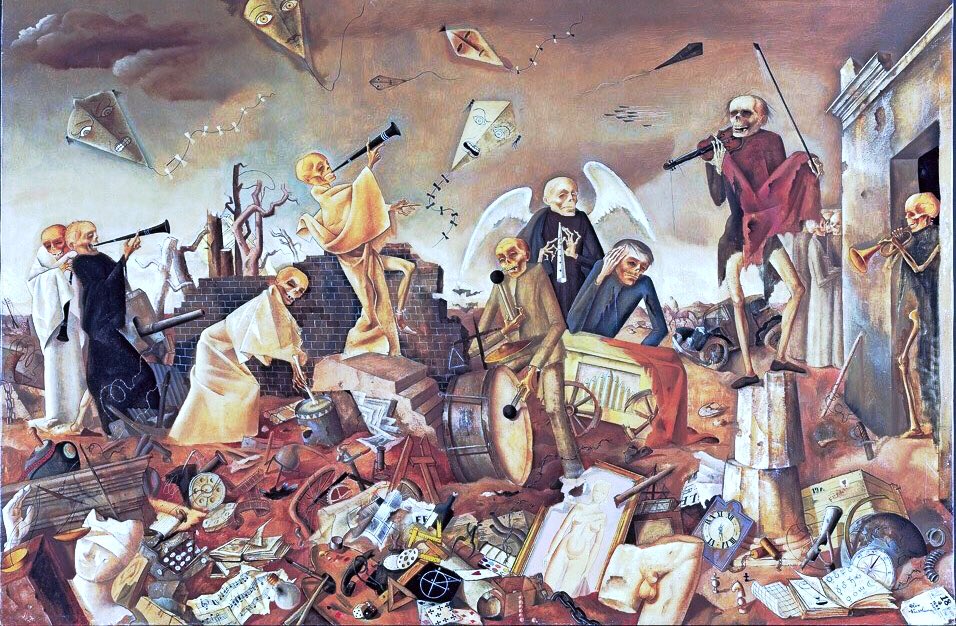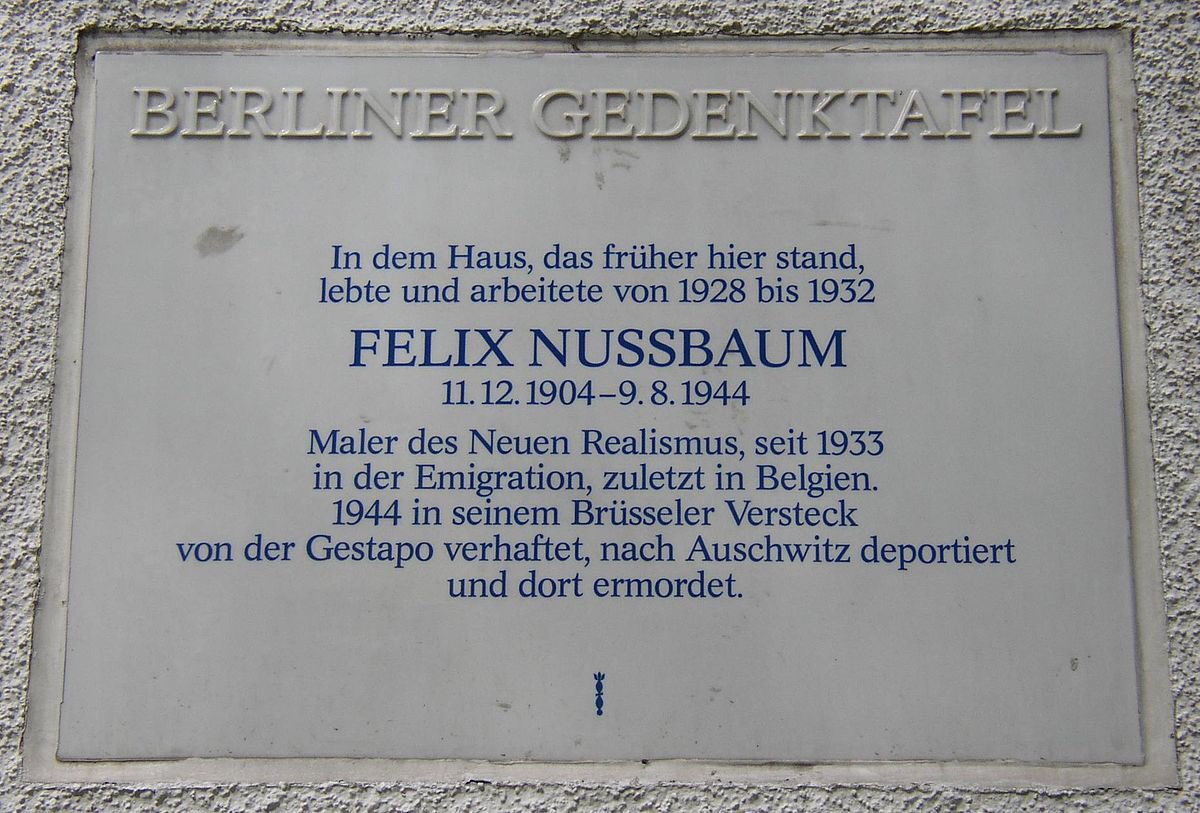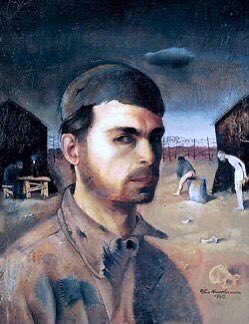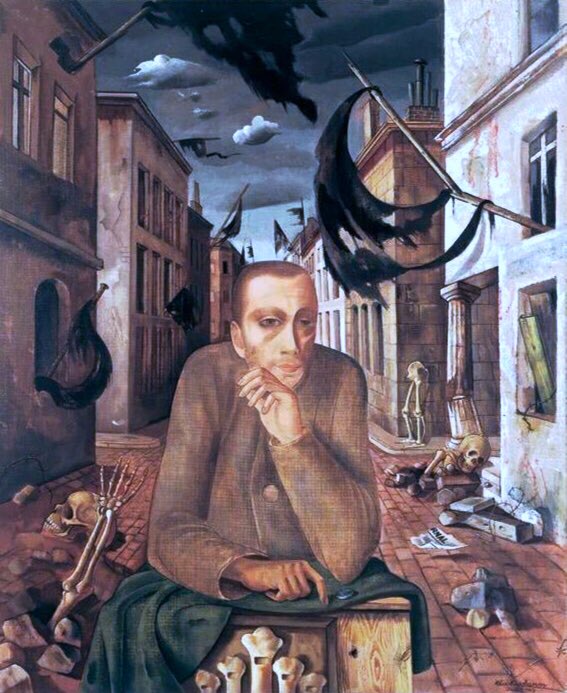Thread: Felix Nussbaum (1904-44) was a German Jewish art. He gave us a profound record of man’s inhumanity to man. He charted the inner life of an artist facing a world gone mad. His work is amongst the most important of the 20thC as a witness to evil. It is a lesson we need now.
Nussbaum was born into a patriotic German Jewish family in Osnabrück, his father having fought for Germany in WWI. His dad encouraged him to paint. He studied in Hamburg & Berlin. Nussbaum (1930s). It was a time when the far right was dehumanising Jews, LGBTQI & Roma
He studied Van Gogh, Rousseau & de Chirico & won a scholarship to Rome’s Berlin Academy of Arts. There, in 1933 a Nazi propaganda minister explained all artists must glorify the ‘Aryan Race’. My Father & Mother (1926), Fairground (1925) & Remembering Grüßau (1925)
In 1926 he had his first one man exhibit in Berlin. Man with Top Hat (1926), Am Sandpfad in Emden (1926), Self-Portrait with Green Hat (1927) & Masquerade (1927). His was an intense, exciting & personal vision.
Throughout his life he completed many self-portraits which give an indication of his interior emotions. They are profound & human. Self-Portrait with Mask (1928), Country Postman (1928), Memory of Norderney (1929) & A Night Scene from Arles (1929)
Already by the early 30s there is a note of menace & fear in his images. Gallows (1930), Dance at the Wall (1930), Bildnisgruppe (1930) & The Painter in his Studio (1931). This was a time when Fascism was on the rise, much as today.
In the Great Place he shows artists arriving with their canvases for a Berlin gallery as a funeral march is played behind them. Der Tolle Platz (1931), Couple (the artist & his wife), 1932. The latter is a homage to Van Gogh & to love.
He brought his fiancé to meet his parents in Switzerland in 1934, where they had moved. They were homesick & against his objections they returned to Germany. Interior with Still Life (1935), Self-Portrait in Artists Clothes (1935), Felka Painting (1935) & Mastenwald (1935)
There is a playfulness & release in his early pictures from Brussels, where he plays with & mocks his own image. View of Ostende (1935), Self-Portrait with Apple (1936), Self-Portrait with Tea Towel (1935) & Self-Portrait In Archway (1936)
At the end of the decade his work takes on a darker edge, the persecution of the Jews in Germany was widely known in Belgium. Self-Portrait (1938), Fish Market (1936), Self-Portrait with Brother (1937) & Self-Portrait in the Studio (1938)
His painting, the Pearls, is ominous in showing a grieving woman, melancholy child & graveyard (how should we read Christian crosses?). The Pearls (Mourners) 1938, Don Quixote & the Windmills (1938), the Great Disaster (c1939) & Self-Portrait with Surrealist Background (1939)
Nussbaum & his wife Felka left for Belgium (c1934) & remained there for 10 years. The Refugee, Brussels (1939), Unidentified Man (1941), Still-Life with Mask, Glove & Football (1940) & Prisoner (1940). His refugee sits with nowhere to turn as a globe stands by, indifferent.
One of his most tragic works is Fear. He clutches his niece, the future, with terror. Yet even in the darkness stars & a lantern offer hope. Self-Portrait with Key (1941), Fear (Self-Portrait with his Niece, Marianne) 1941, Camp Synagogue (1941), Self Portrait with Felka (1942)
His painting, The Storm, symbolises the horrific events engulfing the Jewish people. Only Nussbaum, experiencing that darkness, could paint it. Young Couple (1941) & The Storm (The Exiles) 1941.
Nazis invaded Belgium in 1940. He was arrested as a ‘hostile alien’ & was taken to the Saint-Cyprien Camp, France & signed a request to be transferred to Germany. Self-Portrait in Camp (1943), Self-Portrait with Jewish Passport (1943), Prisoners (1943) & The Organ Grinder (1943)
Nussbaum escaped on the train journey to Germany & joined Felka in Brussels. They went into hiding & lived with constant fear of being found, tortured & murdered. Puppets (1943), Self-Portrait (1943) & Jew at the Window (1943)
In 1944 Felix Nussbaum’s parents were murdered in the Auschwitz Concentration Camp.
Five months later Felix & Felka were discovered. They were taken to the Mechelen Transit Camp.
The Damned (1944), Threesome (1944), Jaqui in the Street (1944) & Stolpersteine for his parents
Five months later Felix & Felka were discovered. They were taken to the Mechelen Transit Camp.
The Damned (1944), Threesome (1944), Jaqui in the Street (1944) & Stolpersteine for his parents
On the 2nd of August 1944 the couple were taken to Auschwitz.
One week later, Felix was murdered there.
One week later, Felix was murdered there.
Felix’s brother, sister-in-law & niece were murdered in Auschwitz too.
Felka was murdered the day she arrived there with Felix.
All we have left of Nussbaum & his family is his deeply powerful art.
He painted the authentic experience & emotion of a man in extremis.
Felka was murdered the day she arrived there with Felix.
All we have left of Nussbaum & his family is his deeply powerful art.
He painted the authentic experience & emotion of a man in extremis.
You can read more here: https://yadvashem.org/yv/en/exhibitions/nussbaum/about_nussbaum.asp">https://yadvashem.org/yv/en/exh...
Even in Ireland the hatred of the far right is echoed.
Please sign the petition in this thread. We must never forget. The fight for human rights is vital. https://twitter.com/robertbohan/status/1274091048852238341">https://twitter.com/robertboh...
Please sign the petition in this thread. We must never forget. The fight for human rights is vital. https://twitter.com/robertbohan/status/1274091048852238341">https://twitter.com/robertboh...

 Read on Twitter
Read on Twitter
